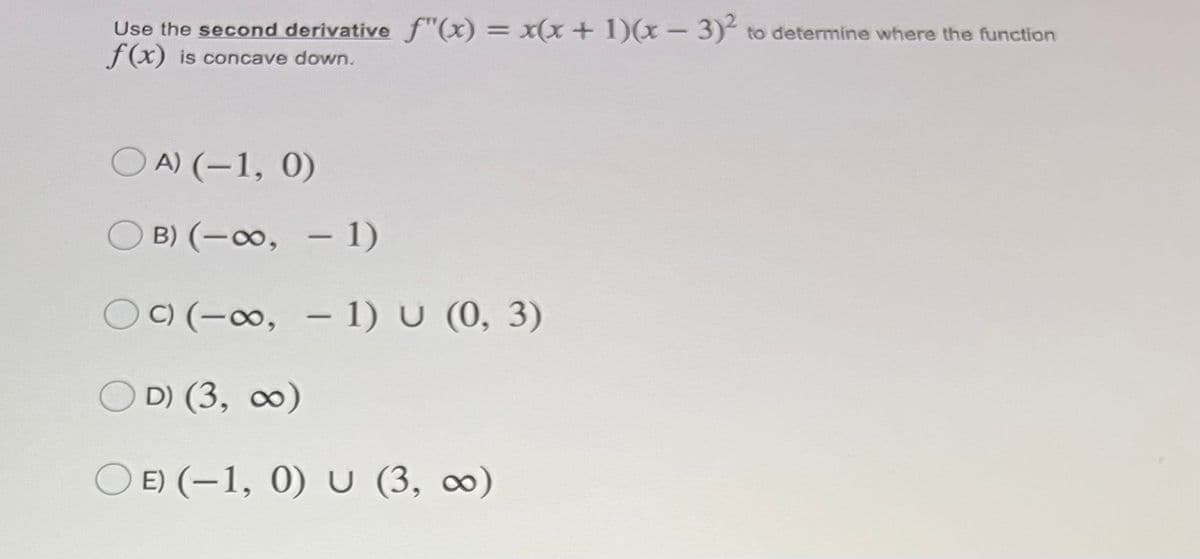Use the second derivative f"(x) = x(x+ 1)(x-3) to determine where the function f(x) is concave down. O A) (-1, 0) B) (-o, – 1) - O) (-o, - 1) U (0, 3) – 1) U (0, 3) O D) (3, 0) O E) (–1, 0) U (3, ∞)
Use the second derivative f"(x) = x(x+ 1)(x-3) to determine where the function f(x) is concave down. O A) (-1, 0) B) (-o, – 1) - O) (-o, - 1) U (0, 3) – 1) U (0, 3) O D) (3, 0) O E) (–1, 0) U (3, ∞)
Chapter3: Functions
Section3.3: Rates Of Change And Behavior Of Graphs
Problem 2SE: If a functionfis increasing on (a,b) and decreasing on (b,c) , then what can be said about the local...
Related questions
Question
100%

Transcribed Image Text:Use the second derivative f"(x) = x(x + 1)(x – 3)² to determine where the function
f(x) is concave down.
O A) (-1, 0)
OB) (-o, – 1)
O) (-∞, – 1) U (0, 3)
O D) (3, ∞)
O E) (–1, 0) U (3, ∞)
Expert Solution
This question has been solved!
Explore an expertly crafted, step-by-step solution for a thorough understanding of key concepts.
Step by step
Solved in 2 steps with 2 images

Recommended textbooks for you


Algebra & Trigonometry with Analytic Geometry
Algebra
ISBN:
9781133382119
Author:
Swokowski
Publisher:
Cengage


Algebra & Trigonometry with Analytic Geometry
Algebra
ISBN:
9781133382119
Author:
Swokowski
Publisher:
Cengage